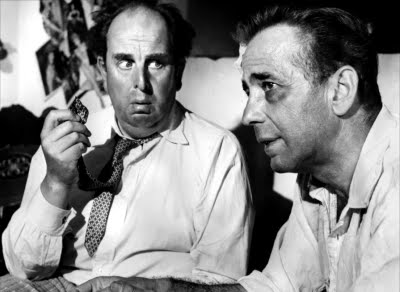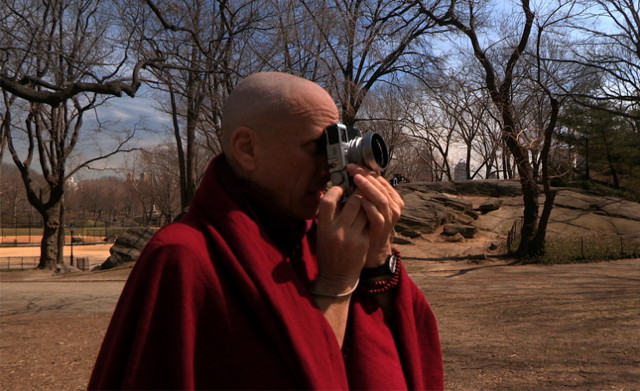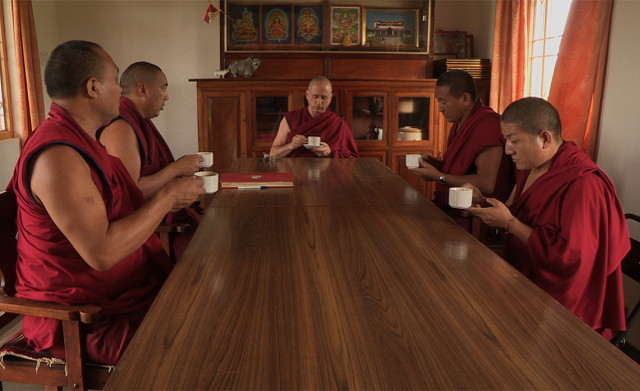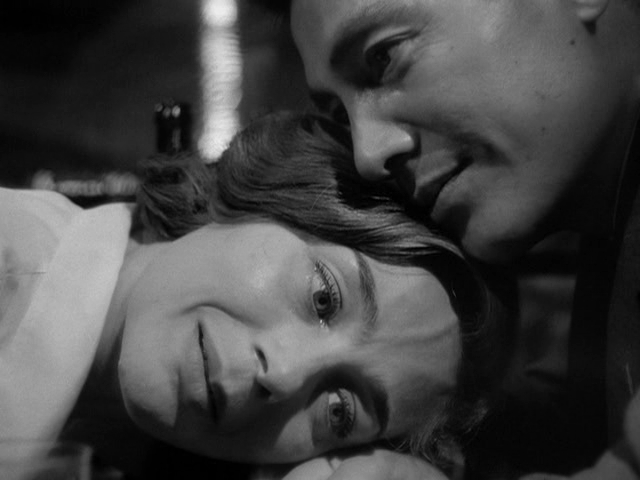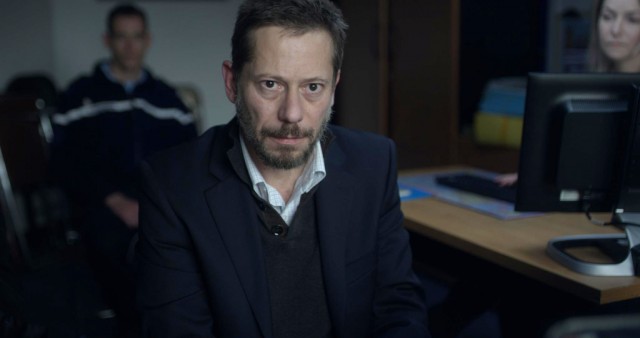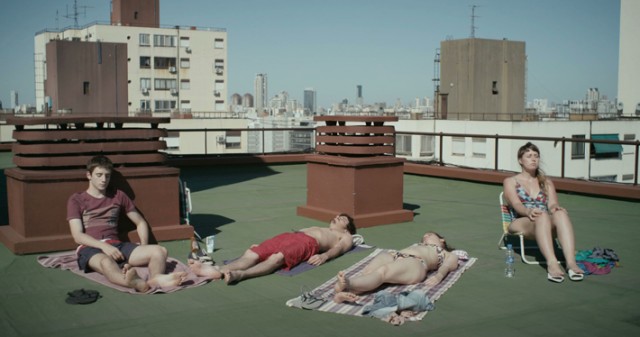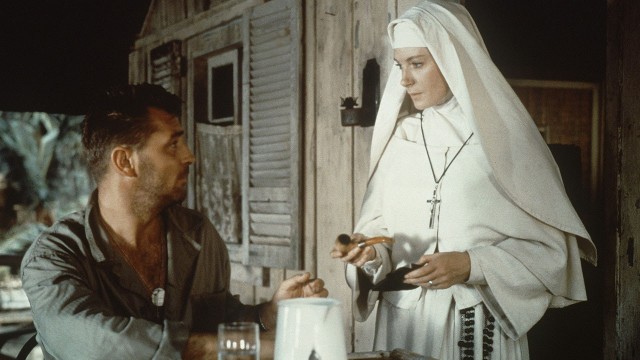
A marine corporal (Robert Mitchum) and a Catholic novitiate (Deborah Kerr) are stuck on a deserted island in John Huston’s HEAVEN KNOWS, MR. ALLISON
HEAVEN KNOWS, MR. ALLISON (John Huston, 1957)
Film Society of Lincoln Center, Walter Reade Theater
165 West 65th St. between Eighth Ave. & Broadway
Tuesday, December 30, 3:45, and Saturday, January 3, 3:45
Festival runs December 19 – January 11
212-875-5050
www.filmlinc.com
 In 1944, a marine corporal (Robert Mitchum) washes up on an island that has only one other occupant: a Catholic novitiate (Deborah Kerr) preparing to take her final vows, stranded there because of the war and the death of an aged priest. When the Japanese first bomb the island, then occupy it, the rugged Mr. Allison and the demure Sister Angela are forced to hide out together in a cave as they face both starvation and enemy capture. Adapted by director John Huston and John Lee Mahin (No Time for Sergeants, Show Boat) from Charles Shaw’s 1952 novel, Heaven Knows, Mr. Allison is a charming character study, a different kind of love story that develops within a lush, gripping Cinemascope WWII drama. Connecticut native Mitchum (Out of the Past, The Night of the Hunter), who is often shown bare-chested, and Glasgow-born Kerr (From Here to Eternity, Separate Tables), mostly hidden within her white habit (which stays remarkably clean through most of the film), are at their best as they reveal details of lives that are more similar than they initially imagine. (Kerr was nominated for an Oscar for the film, one of her six Best Actress nods, earning an honorary Academy Award in 1994, while Mitchum’s lone nomination was for Best Supporting Actor in 1945’s The Story of G.I. Joe.)
In 1944, a marine corporal (Robert Mitchum) washes up on an island that has only one other occupant: a Catholic novitiate (Deborah Kerr) preparing to take her final vows, stranded there because of the war and the death of an aged priest. When the Japanese first bomb the island, then occupy it, the rugged Mr. Allison and the demure Sister Angela are forced to hide out together in a cave as they face both starvation and enemy capture. Adapted by director John Huston and John Lee Mahin (No Time for Sergeants, Show Boat) from Charles Shaw’s 1952 novel, Heaven Knows, Mr. Allison is a charming character study, a different kind of love story that develops within a lush, gripping Cinemascope WWII drama. Connecticut native Mitchum (Out of the Past, The Night of the Hunter), who is often shown bare-chested, and Glasgow-born Kerr (From Here to Eternity, Separate Tables), mostly hidden within her white habit (which stays remarkably clean through most of the film), are at their best as they reveal details of lives that are more similar than they initially imagine. (Kerr was nominated for an Oscar for the film, one of her six Best Actress nods, earning an honorary Academy Award in 1994, while Mitchum’s lone nomination was for Best Supporting Actor in 1945’s The Story of G.I. Joe.)
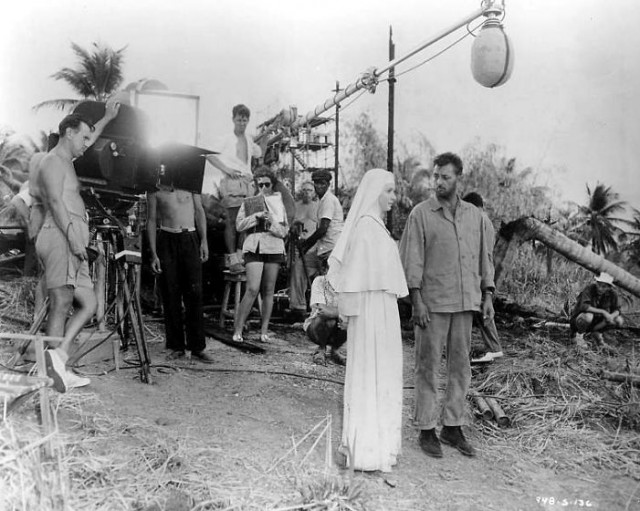
Deborah Kerr, Robert Mitchum, and crew members on the set of HEAVEN KNOWS, MR. ALLISON on the island of Tobago
Huston draws numerous parallels between the institutions they have dedicated themselves to, the military and the church, each involving a strict set of rules and behavior, along with specific uniforms. But while Mr. Allison puts his belief in himself and his fellow marines, Sister Angela relies on a higher authority. Mitchum and Kerr, who evoke Humphrey Bogart’s resilient Mr. Allnut and Katharine Hepburn’s prim Rose Sayer in Huston’s The African Queen, went on to make three more films together, The Sundowners (another Oscar nod for Kerr) and The Grass Is Greener in 1960 and the 1985 British TV movie Reunion at Fairborough. Heaven Knows, Mr. Allison is screening December 30 and January 3 as part of the Film Society of Lincoln Center series “Let There Be Light: The Films of John Huston,” which runs through January 11 and consists of forty films directed by the master, from Across the Pacific and The Barbarian and the Geisha to Fat City and In This Our Life, from The Kremlin Letter and The Life and Times of Judge Roy Bean to Moulin Rouge and The List of Adrian Messenger, in addition to a handful of other works he either appeared in (Tentacles!) or that demonstrate his lasting influence (There Will Be Blood).
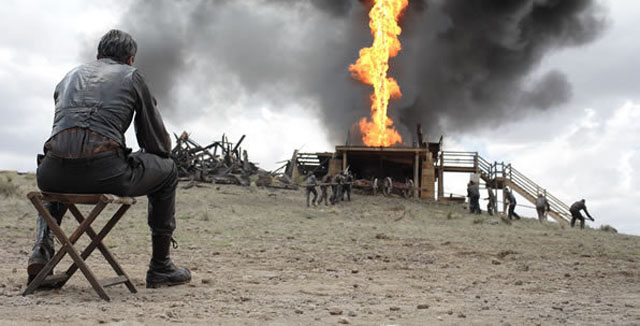
 In the fall of 2007, Paul Thomas Anderson talked to
In the fall of 2007, Paul Thomas Anderson talked to 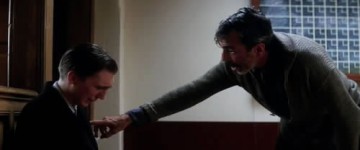
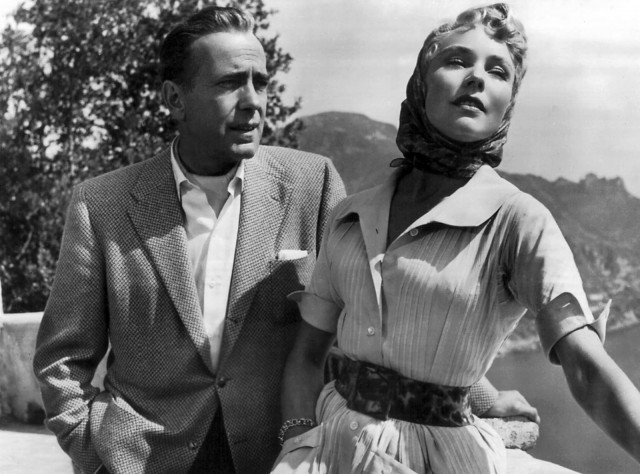
 Oscar-winning director John Huston pokes fun at some of his previous films in the sly, dry crime noir parody Beat the Devil. Written by Huston and Truman Capote, who furiously typed out pages every day on set, the 1953 black-and-white film teams Huston with Humphrey Bogart for the sixth and final time, following such successes as The Maltese Falcon, Key Largo, The Treasure of the Sierra Madre, and The African Queen, elements from all of which can be found in this jumbled tale of a gang of crooked men looking to score big in the uranium mines of Kenya. Bogart stars as Billy Dannreuther, a cool customer married to Italian firebomb Maria (Gina Lollobrigida). They are stranded in an Italian port town while waiting for a ship to take them and his associates — Peterson (Robert Morley), O’Hara (Peter Lorre), Ravello (Marco Tulli), and Major Jack Ross (Ivor Barnard) — across the Mediterranean to Africa. Also along for the ride is the prim and proper Harry Chelm (Edward Underdown) and his hotsy-totsy wife, Gwendolen (Jennifer Jones), who quickly falls for the smooth, confident Billy. Throw in a murder, a drunk captain (Saro Urzi), and some neat twists and turns and you have yourself an amusing little exercise, even if it does have its share of plot holes, story jumps, and inconsistencies.
Oscar-winning director John Huston pokes fun at some of his previous films in the sly, dry crime noir parody Beat the Devil. Written by Huston and Truman Capote, who furiously typed out pages every day on set, the 1953 black-and-white film teams Huston with Humphrey Bogart for the sixth and final time, following such successes as The Maltese Falcon, Key Largo, The Treasure of the Sierra Madre, and The African Queen, elements from all of which can be found in this jumbled tale of a gang of crooked men looking to score big in the uranium mines of Kenya. Bogart stars as Billy Dannreuther, a cool customer married to Italian firebomb Maria (Gina Lollobrigida). They are stranded in an Italian port town while waiting for a ship to take them and his associates — Peterson (Robert Morley), O’Hara (Peter Lorre), Ravello (Marco Tulli), and Major Jack Ross (Ivor Barnard) — across the Mediterranean to Africa. Also along for the ride is the prim and proper Harry Chelm (Edward Underdown) and his hotsy-totsy wife, Gwendolen (Jennifer Jones), who quickly falls for the smooth, confident Billy. Throw in a murder, a drunk captain (Saro Urzi), and some neat twists and turns and you have yourself an amusing little exercise, even if it does have its share of plot holes, story jumps, and inconsistencies.